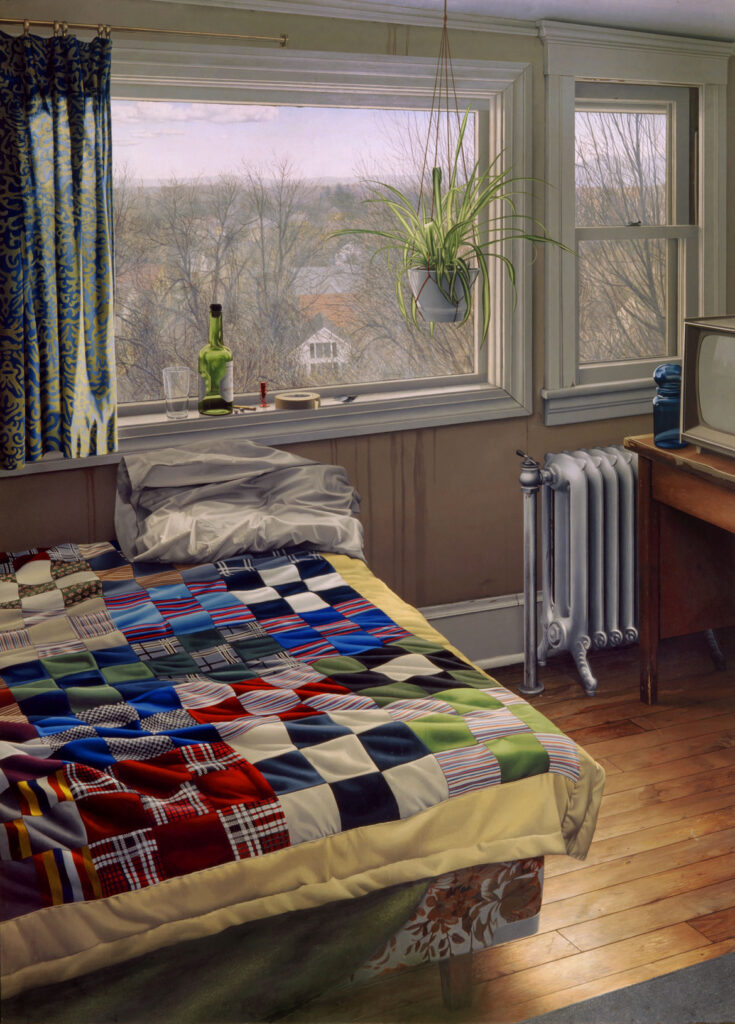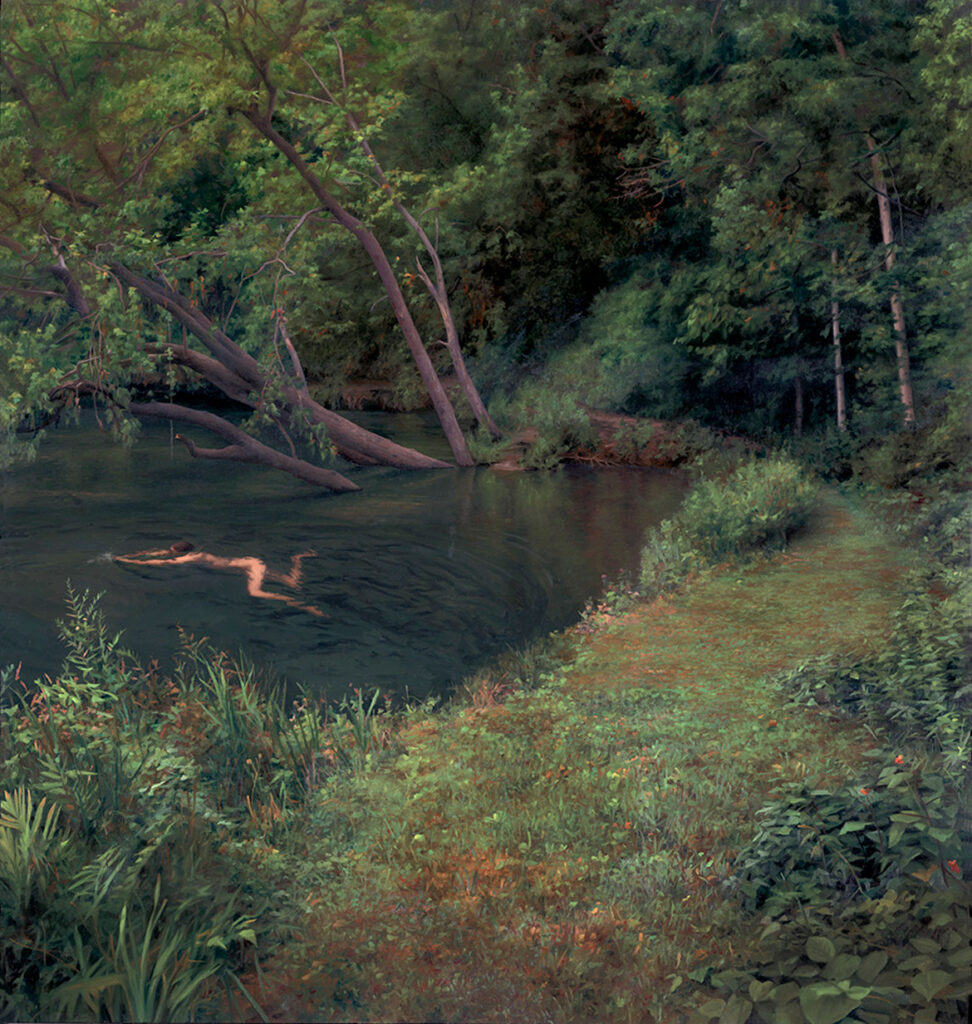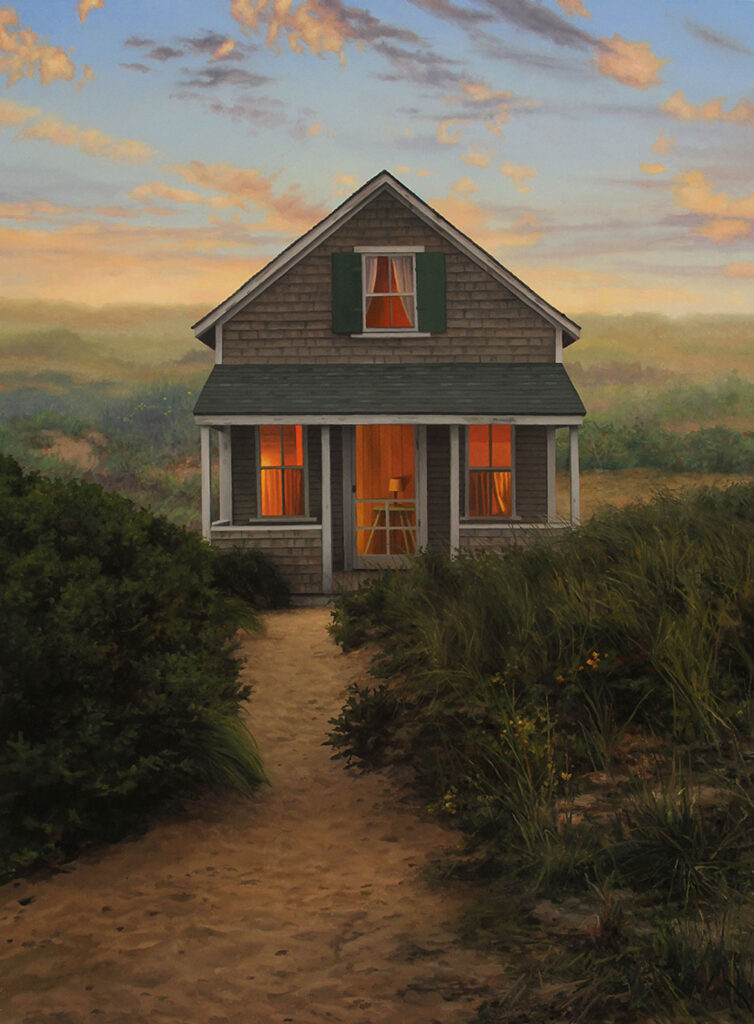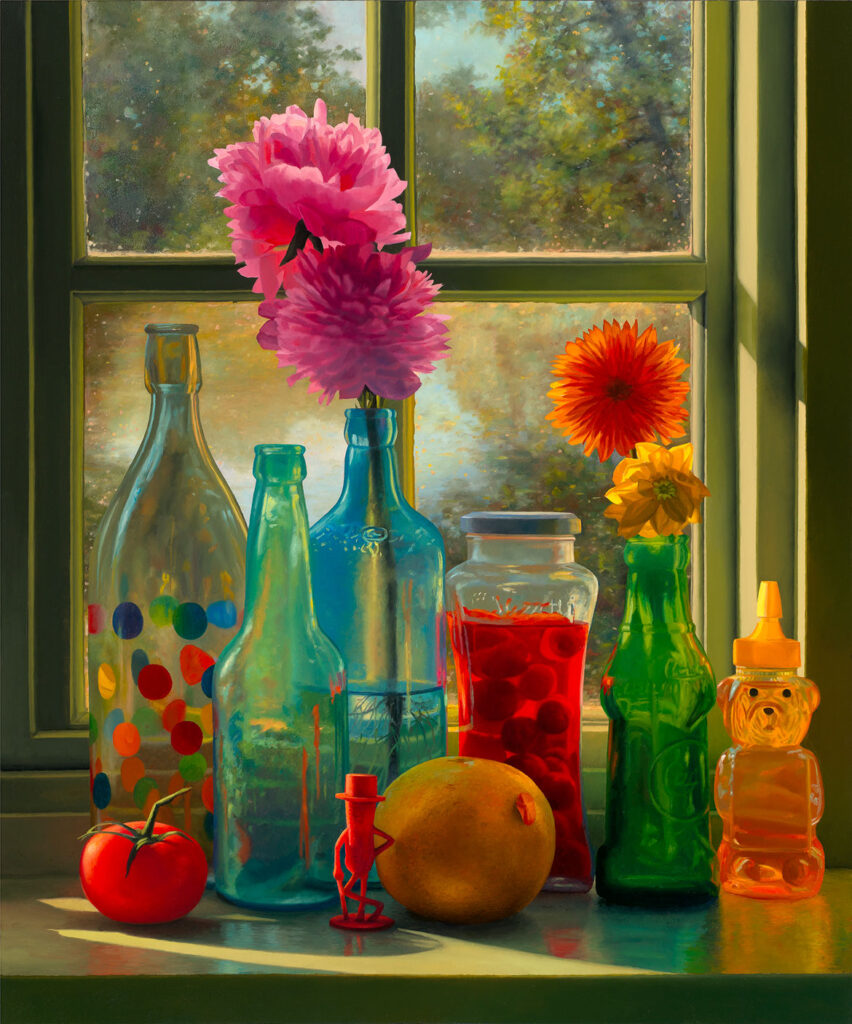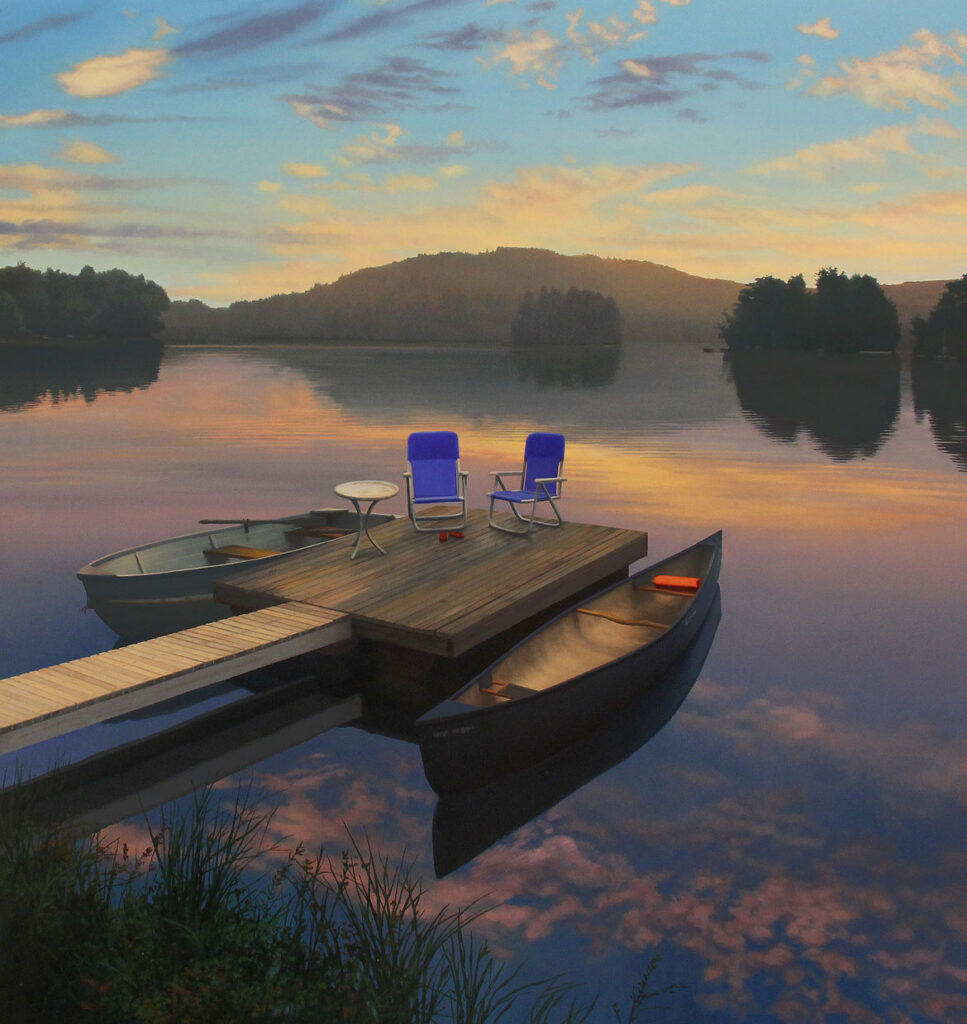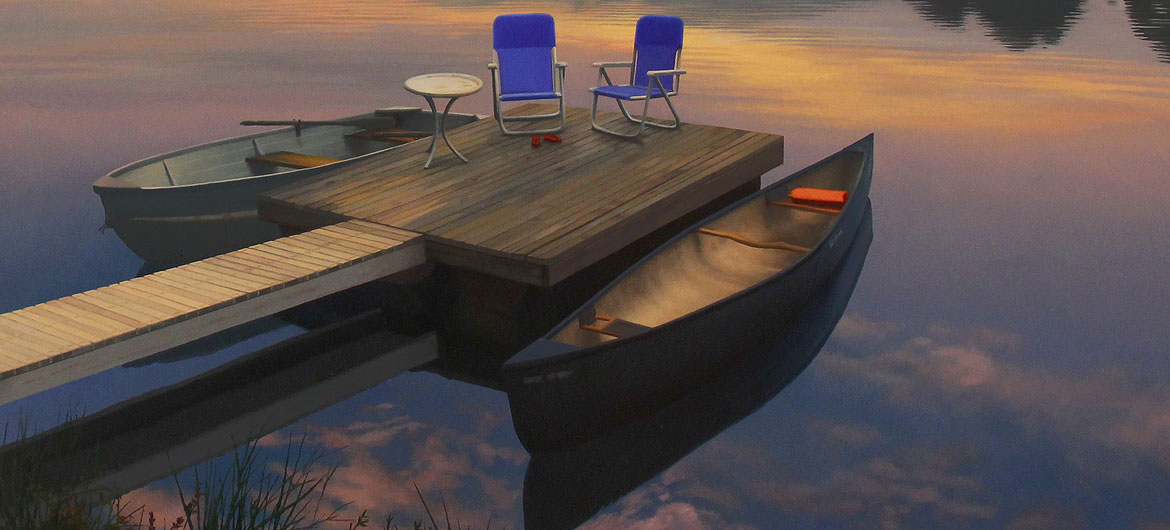“In New England, we live in a world of changing seasons, which, I think, invites an almost sensual awareness of time and its effects. The New England landscape is small and intimate and directs our attention to things close at hand,” painter Scott Prior has written on his website.
“Illuminations,” at the Cahoon Museum in Cotuit, Massachusetts, from March 18 to May 29, 2021, offers a survey of more than 35 of his paintings and drawings. Here are still-lives glowing in front of windows; cabins in the Cape Cod dunes; an abandoned amusement park; his wife, Nanny, in a robe seated on their porch with their dog or standing in a garden; sunlight shining through beach towels hung outside on laundry lines; and people gathered around bonfires on Cape Cod beaches.
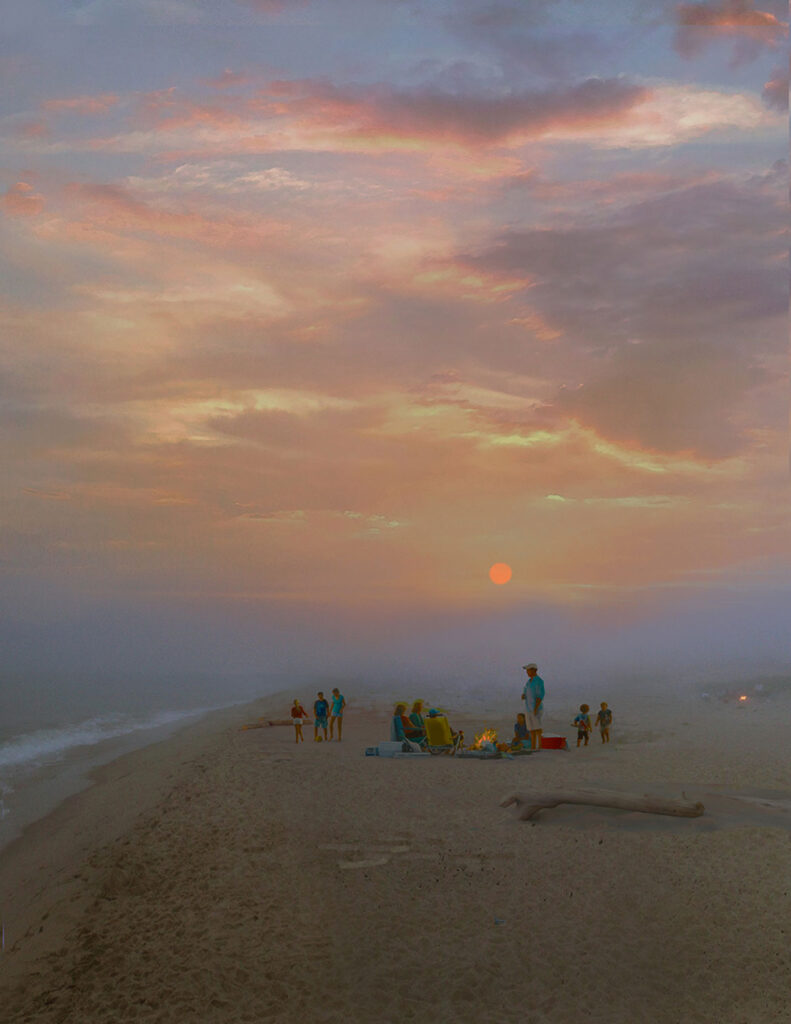
Prior was born in Exeter, New Hampshire. He studied art at UMass-Amherst, from which he graduated in 1971. He’s lived in Northampton since 1971, in view of Mount Monadnock.
During the summer of 1969, he’s said, he quit a summer job washing dishes on Cape Cod, started selling his watercolors, hung on a fence in Provincetown—and his future opened up before him.
Technology as a contemporary religion was a theme of his early, allegorical paintings of machines, angels and bruised oligarchs. They were painted in an expressionist style inspired by the grotesque contemporary surrealism of painter Gregory Gillespie, an early mentor and friend, whom he met in 1973. Compositions evoked Dutch and Flemish renaissance altarpieces. Prior was also inspired by the obsessive detail of these artists. A Whitney Museum retrospective of paintings by Edward Hopper in 1980 was a lesson in how to convey the feelings of alienation and the “emotional power of light.”

Around the late 1970s and early 1980s, Prior arrived at the style that he’s pursued ever since then: realistic portrayals of his haunts in western Massachusetts and Cape Cod and views into his domestic life. These are quiet places, often witnessed alone—“off season,” as he described it in a 2016 video by John Thornton—or intimate moments with perhaps one other person, a child, a lover. This work prompted observers to group him among the Pioneer Valley painters sometimes dubbed the “Valley Realists.”
Prior’s paintings generally begin as photos—which he combines digitally in Photoshop and in pencil sketches. He transfers the sketch—these days viewed on his iPad—to the painting board or linen with a grid. “I start [painting] in the upper left hand corner and work to the lower right hand corner. And there’s a very practical reason for that, which is that way I don’t put my elbow in the painting,” Prior told Thornton.
Prior paints it all with a smooth, dreamy, hyperawareness of fleeting moments portrayed in crystalline detail, given the honeyed glow and poignant, bittersweet mood of a perfect summer evening. You might call it a beatific light.
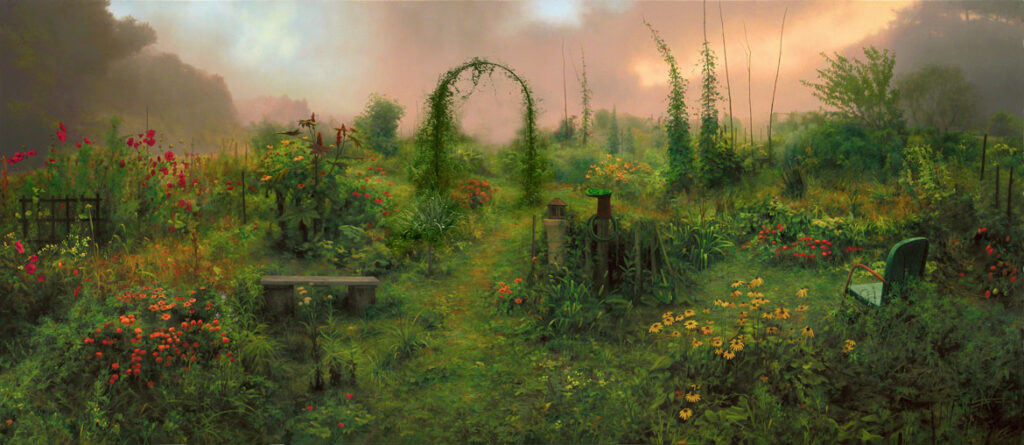
“I live in Eden, my life is very much Edenic, that’s the way I see it,” Prior said in a video for his 1999 deCordova Museum retrospective. He’s also described his project as “discovering the spiritual in the everyday.”
Prior settled upon his style around the same time as he got married and became a father. “Most of my paintings … are about my marriage and [three] children, a babysitter or two and the places we call home: our house, the backyard, Cape Cod, and western Massachusetts,” Prior writes on his website.
“We’re looking at a very particular moment,” Prior said in the video for his 1999 deCordova retrospective, “like a snapshot, but most snapshots don’t do it for us, it’s hopefully more than that.”
If this is the kind of coverage of arts, nature, cultures and activisms you appreciate, please support Wonderland by contributing to Wonderland on Patreon. And sign up for our free, (hopefully) weekly newsletter so that you don’t miss any of our reporting. (All content ©Greg Cook 2021 or the respective creators.)
